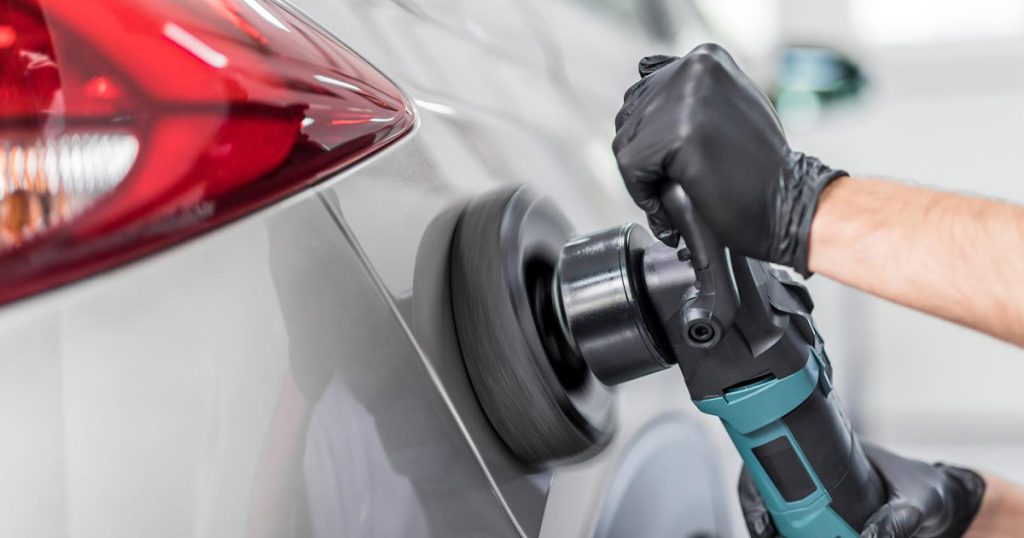So you’ve been painstakingly hand polishing scratches and marks out of the paintwork of your car for a while now. But quite frankly, you’ve had enough. Yes, you are determined to maintain your car in as good a condition as possible, and you can’t stand to see even the slightest defects on it.
But you’re getting to the point when you are doubting whether hand polishing is worth the time and effort. We hear you. It’s a tedious, laborious job. You realistically can only ever manage a small portion of your car’s paintwork at a time anyway. It takes ages to get right and your arms ache for days when you’re done.
You could take your car to a professional detailer and pay them to do the work. But then, you’ve also heard of car polishing machines – electric motorised tools that do the donkey work for you. For the price of one or two trips to a pro detailer, you could have a machine that you could use yourself for years and years. In terms of economy, there’s no contest.
But there’s one big drawback with polishing machines. You’ve heard you have to be careful with them. In inexperienced hands, used incorrectly, they can end up doing more damage to your paintwork than good.
Is it worth the risk?
It is certainly true that incorrect use of a polishing machine can end up badly burning a car’s paintwork. Let’s not forget what polishing is – applying an abrasive to physically alter the surface of your car’s paint, in order to smooth out marks and defects. The combination of a cutting compound and a rapidly rotating motorised disk can certainly spell trouble if you don’t know what you are doing.
The good news is that these days you can find a whole range of polishing machines designed for the amateur DIY detailer rather than the professional user. These machines have special features that minimise the risk of doing damage to your paintwork. Here’s how they work, and what to look out for when choosing your first car polishing machine.
Fixed versus dual action rotation
The irony about polishing machines is that the simplest ones are also the hardest to use. The most straightforward design spins the polishing disk in a single direction or plane around a central spindle. These types are known as rotary polishers.
When you press the spinning pad of a rotary polisher against your car’s paintwork, the whole surface is in contact with the paint. On the one hand, this makes rotary polishers very efficient and quick at buffing out marks. But on the other hand, the speed makes them tricky to handle. You have to know how much pressure to apply, and for how long, otherwise you can find you’ve damaged the paint in a matter of seconds.
Dual action polishers reduce this risk by also making the disc ‘wobble’ as it spins. This secondary motion means that the whole disc is not in contact with the paintwork at the same time, which slows down the polishing process. You can afford to let the pad linger a little longer without worrying that you are going to cut too deep into the paintwork. The gentler action makes it easier to take your time and polish at your own pace, which is what you want when you first use a machine.
Forced rotation polishers
A special sub-category of dual action polishers are known as forced rotation machines. The technicalities of how they work are pretty complicated, but it basically boils down to this. Whereas a dual action machine lets the spinning polishing pad wobble freely, a forced rotation machine has the disc deviate in a fixed orbital pattern in relation to the normal spin.
Again, the main effect is that only part of the pad is in contact with the paintwork when you press it on, resulting in a more gentle action. However, the wobble of a dual action polisher changes the harder you press. If you press hard enough, you can end up with the whole pad in contact with the paint – although at this kind of pressure, you will also be slowing the rotation down.
The key point is that with a standard dual action machine, the spin and therefore the impact on your paintwork can vary, which introduces unknowns into the process. With a forced rotation polisher, the scalloped action of the pad is always the same. What is more, the motor will drive the pad round at a constant speed no matter how hard you press (hence the ‘forced’ part of the name).
This consistency makes forced rotation polishers the easiest to use, and the best choice for novice users.

